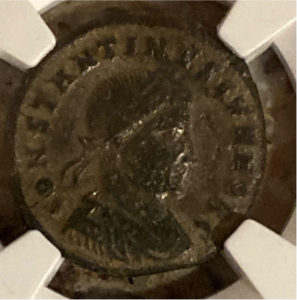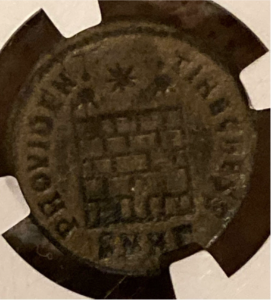
|
Ancient Rome History and Numismatics
Author: Drew Meyers (Age 9) ANA Young Numismatist -
Friday March 01, 2024 |
 Ancient Rome existed from 625BC to 476AD. The Roman empire grew to span several continents and with it came growth of goods, trade, and wealth. The use of money and coins developed over time and as the empire expanded.
Between 625BC and 510BC was the period of the Kings when there were 6 concurrent Kings in Rome. The last King was in 509BC when the Romans founded the early Roman constitution that helped establish rights and privileges of the citizens of Rome. During this period, Rome grew in size and advanced it’s military and production of goods.
Following the period of the Kings was the Republican Rome from 510BC to 31BC. There were no longer kings and the government was ruled by the upper class and knights. In 451BC the Romans created the Twelve Tables which is a code of laws that established basic laws that were previously unwritten but people abide by and basic rights. In 51DC Emperor Julius Caesar conquered Celtic Gaul and the Roman Empire grew beyond the Mediterranean.
The last period of Ancient Rome was Imperial Rome from 31BC to 476AD. By AD 117 the Roman empire was at its biggest point in time. It reached across three continents- Asia Minor, Northern Africa and most of Europe. In 286AD the Roman Empire was split into the Eastern and Western Empires. The first emperor was Augustus Caesar in 27BC.
In Ancient Rome there were numerous forms of currency that developed into coins because it was too hard to trade one object for another of equal value. Most coins were minted with gold, silver, copper, bronze, or orichalcum, an unknown metal type which may have been platinum. The first coins were made in 326BC and were minted for 800 years. The coins represented consistent value for trade. Additionally, coins were used as a media to show what the emperor or king looked like. The silver denarius was the primary silver coin for the Roman Empire.
The minting of coins was under the supervision of three junior magistrates and initially depicted classic images of Roma, Jupiter, Mars, and Victory before depicting the Emperor. They stamped the coins by placing a planchet onto a precut die and hit it with a heavy hammer. This was all done by hand and they produced millions of coins per year.
On display is a coin of Constantine II who ruled from 337-340AD. On the obverse is a bust of Constantine II and on the reverse is a gate to show protection for the people and two beacons that could be used as a signal and a star above. This coin is composed of bronze. Constantine II was born in 316AD and died in battle against his brother Constants in 340AD at the age of 24. Constantine II and his two brothers divided the empire to each rule a portion. Constantine II ruled Britain, Gaul, and Spain. When Constantine II was 13 he was able to beat the Alemanni, modern day Germany. When he and his brothers divided up the empire Constantine II was 21 years old. Constantine II was responsible for his youngest brother Constants. Constantine II bossed Constants and took several regions of Africa from him. Constantine II attempted to invade Italy that Constants ruled but Constants and his army defeated Constantine II in battle in 340AD. When Constantine II died, Constants took all of Constantine II’s land.  |